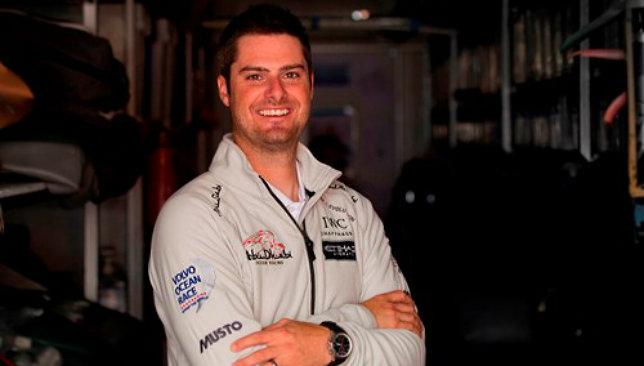
It’s been described as the toughest yet best job in journalism – being an on-board reporter (OBR) in the Volvo Ocean Race. Tossed around in 30 knots of wind, bashing through 20-foot high waves, out at sea for weeks at a time, all the while trying to keep a steady hand to take pictures, record video and annotate the days’ events.
To your average ‘landlubber’ it doesn’t sound that appealing but Volvo Ocean Race chiefs had over 2,000 applications for seven on-board reporter roles for the 2014/15 race. It’s no wonder race CEO Knut Frostad has described them as “war correspondents”, encapsulating all the excitement and action of the race.
Matt Knighton was a late addition to the Abu Dhabi Ocean Racing team and despite being barred from helping to sail, Azzam skipper Ian Walker has praised the work of the 30-year-old.
“People underestimate the role of the on-board reporter,” said Walker. “Can you imagine being on this boat 24 hours a day and not being able to sail it when sailing is your passion?”
Matt took some time out to speak to Sport360° about life on the ocean wave.
How excited are you to be part of the Volvo Ocean Race experience?
I’ve been working for the past four years to be on a Volvo Ocean Race boat as an on-board reporter, so getting this opportunity is something I was really looking forward to and I’ve tried to put as much effort into this as possible. It’s been a great trip around the world so far.
What’s it like being out there?
It’s exactly the adventure that it looks like on camera and on screen, but it’s just magnified. You get the salt spray over your face, you’re sleep deprived and you’re eating really bad freeze dried food. But in the middle of it you’re trying to make really good media and win a race.

What’s it like being part of the team, but not actually being able to sail?
It was a little bit hard to get used to at first. But, I took the effort I would normally put into racing hard and put that into trying my best to take awesome pictures and video.
Overall it’s just a huge privilege to be in the team. I consider myself a media professional first and a sailor second, so around professional sailors like these guys, all I can do is the best I can with my reports and try to help them do their jobs as well as they can.
As an OBR, what aren’t you allowed to do?
I am not allowed to do any sailing whatsoever. I can’t touch any lines, can’t grind, I can’t touch the sails. I can’t affect the performance of the boat in any way whatsoever.
So, what can you do?
What I can do is my media job which involves putting between one and two minutes of video from the boat online each day, three to seven images and about 200 written words.I do that every 24 hours, go to bed for a few hours then wake up and do it all over again.
I can also help the guys out with cleaning the boat and preparing their nutritional needs, refilling the day bags, making sure they’re well fed and I also make lots of cups of coffee that the guys really appreciate all the time.
What’s your favourite part about being on board?
Probably just the time spent with the other guys. We’re all really close friends. Everyone’s got a pretty cool personality and we have a lot of laughs. It’s just a lot of fun experiencing something alongside these guys.
With not much room to operate, how do you get work done on board?
On the boat we have a media station. The communications platform on the Volvo 65 is second to none. The boat has five fixed cameras, which I control from one little screen at my station. There are several audio sources all around the boat so I can listen to a conversations without any of these guys knowing I’m there. I also have three SLR cameras with me.
How did the VOR gig come up?
I got an email originally saying I wasn’t going to be part of this race. Then things shifted at the last minute and I was asked if I was still interested. Within a week I was flying to Portugal to try out for Abu Dhabi, so things turned around really quickly.
What did the process for joining the team entail?
I went through the process with Volvo, sending in my resume. I’d been in touch with their OBR director and then the director of communications conducted an interview with me and passed me onto Ian. Before I knew it I was interviewing with Ian and that was it, he said he’d give me a try.

What’s your sailing background?
I live in Chicago and have raced big boats on the Great Lakes for several years. I also do some ocean racing in San Diego. A few years ago I started doing media for match racing teams. I don’t match race myself but that was another stepping stone towards the VOR with the World Match Racing Tour.
And your media experience?
I’ve been working for the past eight years in documentary film-making, which includes directing the 2013 documentary ‘Black Hawk Down: Return to Mogadishu’, shot in the Somalian war zone. I also did some broadcast work in Chicago.